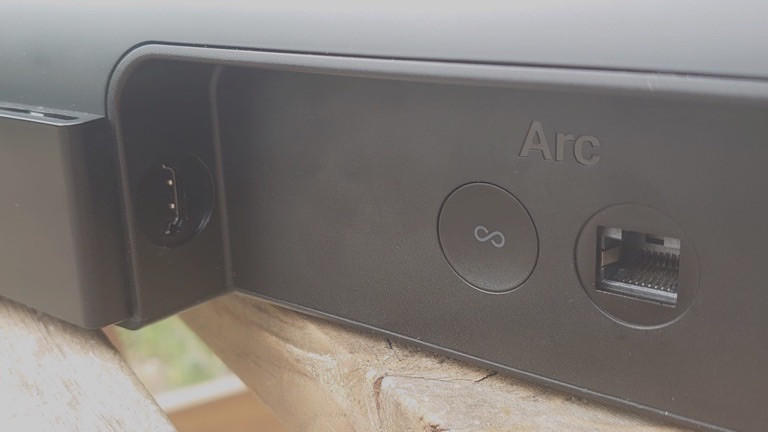
Get the most out of your AV equipment by understanding what exactly EARC is
Unless you’re a veteran AV enthusiast, establishing a home theater can feel like solving puzzles without box covers.
In a constantly changing landscape of HDMI standards, we often find ourselves doing intense Google-ing, try to decipher the acronyms and specifications, and figure out whether AV equipment plays well.
Increasingly common HDMI Earc is a stumping standard for even the biggest nerds (i.e. people like me) when setting up new televisions and audio equipment such as the excellent Sonos Arc Ultra.
If you are also confused as to what exactly EARC is, you have come to the right place to unravel the mystery.
A simple guide to understanding HDMI Earc…
What is HDMI Earc?
HDMI Earc stands for Enhanced Audio Return Channel. This is an upgrade from HDMI Arc (Audio Return Channel), designed to transmit high-resolution audio formats with significantly improved bandwidth.
EARC is an integral part of the HDMI 2.1 specification, and if you’re unsure of what exactly that means, read our comprehensive guide to HDMI.
What is the difference between ARC and EARC?
The key distinctions can be summarised in three parts: bandwidth, audio quality, and compatibility.
- Bandwidth: The usual old arcs are capped at 1Mbps. That is, even audio-surround sound is compressed. But putting that little E into the mix, we’re looking at a 37Mbps pipeline, allowing uncompressed high resolution audio from the latest formats such as Dolby Atmos and DTS:X, Dolby TrueHD, DTS-HD master audio, and uncompressed PCM.
- Audio format: EARC supports a wider range of formats, including Dolby TrueHD and DTS-HD Master Audio. With ARC, it is often limited to Dolby Digital or DTS.
- Lip sync: The ARC includes optional lip sync corrections, but EARC mandates it and ensures better audio and video synchronization, so there are no nasty moments when the actor’s mouth catches up to his words during film time.

How to use HDMI Earc
- Check EARC compatibility: Both the TV and speakers require an EARC-compatible HDMI port. Find EARC labels and check specifications. Almost all modern TVs, midrange and more offer EARC options with soundbars and AV systems.
- Please choose the appropriate HDMI cable: Ultra’s high-speed HDMI cables are ideal, but standard or high-speed HDMI cables with Ethernet often work too. For best results, choose a certified ultra-high speed cable. However, there is no need to break the bank. For under $20 you can get the right, fast, HDMI 2.1 cable.
- Configure the TV settings: Please enable EARC in the TV Settings menu. Depending on your brand, this may be labeled as HDMI audio format ‘ or ‘digital sound output’ and is not always on by default.
- Connecting Peripherals: Make sure your devices, such as gaming consoles and streaming boxes, are connected to the HDMI 2.1 port for optimal audio pass-through. All modern consoles such as the PS5 and Xbox Series S/X offer HDMI 2.1.

hdmi ear Backward compatibility
The good news is that EARC is backwards compatible with ARC devices.
You can connect the Arc Soundbar to an EARC-enabled TV, but it still makes a sound. Although it is limited to ARC’s compressed audio function. The opposite is true, but you miss the benefits of EARC.
Why do you need ears?
For serious audiophiles, EARC is essential. It unlocks the full potential of the sound system and provides uncompressed, immersive audio. Whether it’s a Sonos Arc Soundbar or a 7.1 channel receiver, EARC ensures you haven’t missed the quality.
If you’re investing in a high-end home theater setup or plan to watch a lot of 4K Blu-ray and Atmos-enabled streaming content, EARC should be a priority. Even casual users are worth considering when upgrading gear with improved audio and reduced setups.
The Future of HDMI Earc
With HDMI 2.1 becoming more common, EARC is ready to become the standard for home theater audio.
Brands like LG, Samsung and Sony have already integrated multiple EARC compatible ports into their latest TVs, while brands like Denon, Onkyo and Sonos are also major EARC champions.
So next time you upgrade your home theater, keep EARC in mind. It’s not just another high-tech acronym, it’s very important to make sure you get the best AV performance possible.
HDMI Earc FAQ
Yes, but for best performance, we recommend using an ultra-fast HDMI cable. Many standard or high speed HDMI cables with Ethernet also work, but may not support full EARC functionality.
ARC devices connected to EARC-enabled ports will continue to function, but are limited to ARC’s compressed audio capabilities. You don’t get the greatest advantage of EARC’s uncompressed audio format.
That’s not necessarily the case. Although EARC is part of the HDMI 2.1 specification, not all HDMI 2.1 devices include EARC support. Always check product specifications to check compatibility.
If you have a high-end audio setup that uses uncompressed audio formats such as Dolby TrueHD or DTS-HD Master Audio, EARC is worth an upgrade. Ensures higher audio quality and better synchronization.
No, EARC is specific to HDMI. Optical and Bluetooth connections do not support the same high resolution audio formats and bandwidth provided by EARC.







